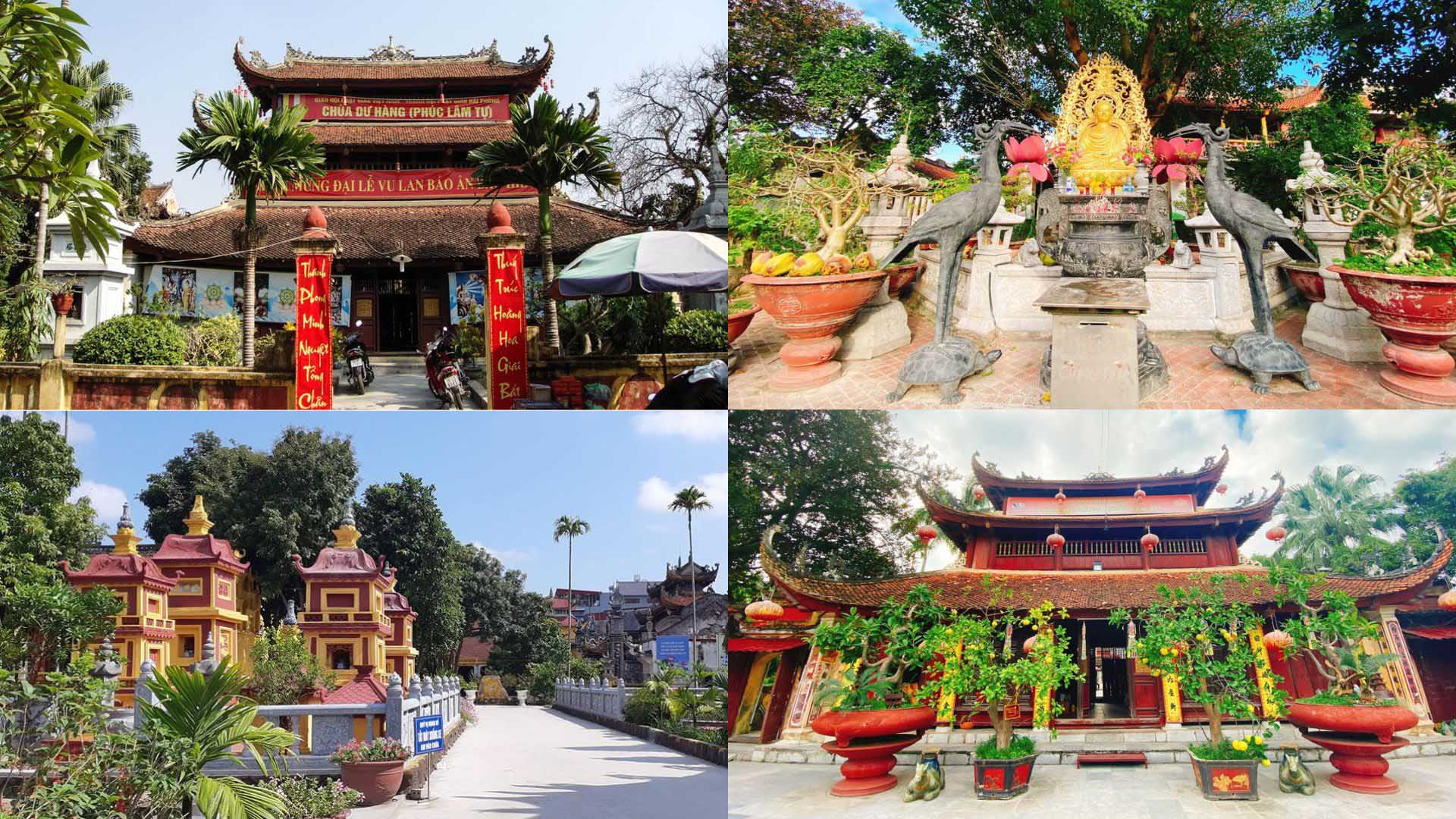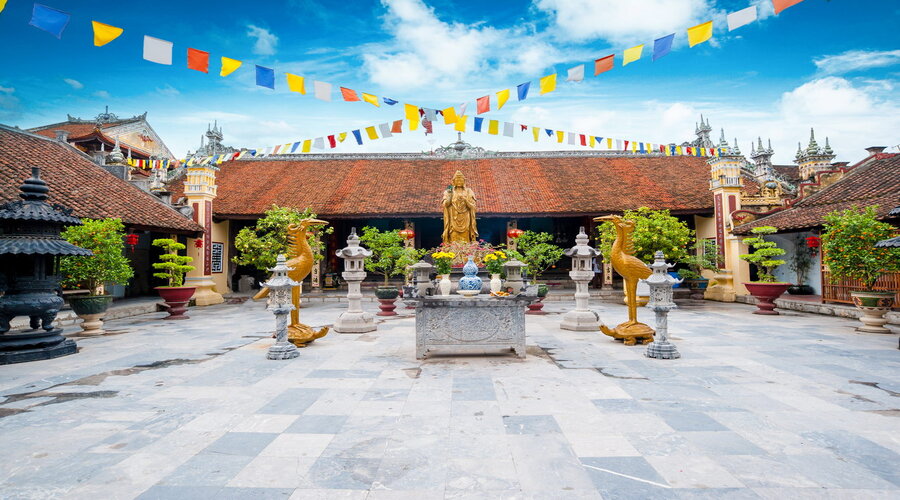Du Hang Pagoda
1. Overview
Du Hang Pagoda, also known as Phuc Lam Tu, is one of the most ancient and revered Buddhist temples in Hai Phong City. Located at 121 Du Hang Street, Le Chan District, the pagoda is a well-known spiritual and cultural landmark for both locals and visitors.
Founded during the early Le Dynasty (10th century), Du Hang Pagoda has witnessed centuries of change, making it not only a place of worship but also a historical symbol of Vietnamese Buddhism.
2. Architectural Features
The architecture of Du Hang Pagoda reflects traditional Northern Vietnamese Buddhist style, with a layout and decorative elements that have been carefully preserved and restored over the years.
Key architectural highlights include:
-
A main gate with curved tiled roofs and stone pillars engraved with Chinese calligraphy.
-
The main hall (Chánh điện), where large statues of Shakyamuni Buddha, Amitabha Buddha, and Bodhisattvas are enshrined.
-
Ancient drum and bell towers, adding to the sacred and solemn atmosphere.
-
A bodhi tree, grown from a branch of the original Bodhi Tree in Bodh Gaya, India – the place where the Buddha attained enlightenment.
-
Traditional architectural layout: "nội công ngoại quốc" (inner shape like a 工 character, outer shape like a 国 character), common in Vietnamese temples.
The complex includes stone statues, wooden altars, bonsai gardens, and lotus ponds, creating a tranquil and meditative environment.
3. Spiritual and Cultural Activities
Du Hang Pagoda plays a vital role in the spiritual life of Hai Phong residents and is a center for Buddhist learning and practice.
Major activities include:
-
Daily chanting and prayer ceremonies, especially during full moon and new moon days.
-
Celebrations of Buddhist festivals, such as Vesak (Buddha’s Birthday) and Vu Lan (Ullambana Festival), attracting hundreds of devotees.
-
Offering rituals, memorial ceremonies, and spiritual guidance by resident monks.
-
Charity work, including giving food, clothing, and scholarships to disadvantaged communities.
The pagoda serves as a peaceful refuge where people come to seek blessings, pray for peace, or simply reflect.
4. How to Experience Du Hang Pagoda
When visiting Du Hang Pagoda, you can:
-
Admire the temple architecture and ancient artifacts, including old statues, inscriptions, and relics.
-
Light incense and make offerings, following local customs.
-
Meditate under the bodhi tree, enjoying the shade and silence.
-
Visit during Buddhist festivals, when the pagoda is beautifully decorated and filled with chants and lanterns.
-
Talk with local monks, who are often open to sharing Buddhist philosophy and stories about the temple’s history.
The pagoda is easily accessible from the city center and makes for a peaceful cultural stop.
5. Conclusion
Du Hang Pagoda is a living witness to the history and spiritual life of Hai Phong. With its over 1,000 years of heritage, elegant architecture, and ongoing religious practices, it stands as a vital symbol of Vietnamese Buddhism. Whether you are a pilgrim, a history enthusiast, or a curious traveler, a visit to Du Hang Pagoda will offer insight, inspiration, and peace.



